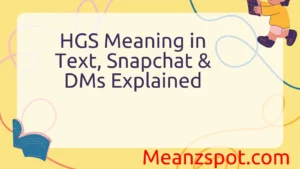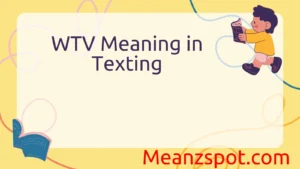📘 Have you ever read a story that reminded you of another book, movie, or even a meme? That’s what we call a text-to-text connection — and it’s a powerful skill that teachers, readers, and content creators are talking about in 2025.
In today’s world of booktok trends, multiverse movies, and fanfiction crossovers, students are constantly making connections between different texts — often without realizing it. Whether it’s comparing Harry Potter to Percy Jackson or linking a YouTube documentary to a school history book, these connections deepen understanding and boost memory.
So what exactly does text to text mean? And how can you master it like a pro?
In this student-friendly guide, we’ll break it down step by step — with real-life examples, trending references, and tips that make reading way more fun and meaningful. 📚✨
Definitions & Meaning
At its core, “text to text” refers to the connection or comparison between two written or spoken texts. In educational settings, it’s often used to describe a type of analysis where a reader draws relationships between two pieces of literature. These connections could involve characters, themes, plots, or stylistic elements. For instance, comparing the themes of oppression in The Handmaid’s Tale by Margaret Atwood and 1984 by George Orwell is a classic example of a text-to-text connection.
In broader terms, “text to text” can also mean drawing parallels between any two pieces of content—news articles, social media posts, or even legal documents. This helps enhance understanding by providing a comparative perspective.
There are several types of text-to-text connections:
- Comparative: How two texts are similar or different in theme or style.
- Referential: When one text directly references another.
- Thematic: Linking texts that explore the same theme in different ways.
This concept fosters critical thinking and analytical skills by encouraging people to see beyond surface-level information and look for deeper patterns and relationships between sources.
Origins & History
The concept of connecting texts isn’t new. Its roots lie in classical rhetoric and literary analysis, where scholars and students were encouraged to compare works by different authors to understand broader themes or societal commentary. However, the formalization of the term “text to text” largely stems from educational frameworks, particularly in reading comprehension strategies promoted in the late 20th century.
One of the most influential models came from literacy education, which categorized text connections into three types: text-to-self, text-to-text, and text-to-world. This approach was introduced as part of guided reading and comprehension techniques, aimed at helping students become more reflective and engaged readers.
As curricula began to emphasize critical thinking and interdisciplinary learning, “text to text” connections became essential in understanding how literature, history, and current events influence each other. This teaching method expanded into other fields, such as comparative literature, media studies, and digital humanities, becoming a cornerstone of analytical education.
The digital age further enhanced the relevance of “text to text” connections. As content became more interconnected—through hyperlinks, references, memes, and remixes—the ability to recognize and interpret relationships between texts became even more essential for both comprehension and content creation.
Usage in Different Contexts
1. Educational Contexts
In classrooms, especially in literature and language arts, students are encouraged to make text to text connections as part of critical reading exercises. For example, comparing the portrayal of heroism in Beowulf and The Odyssey deepens students’ understanding of epic narratives across cultures and time periods.
2. Social Media
Text to text isn’t limited to academic use. On platforms like Twitter or Instagram, users often create threads or stories that build off previous posts, forming a text-to-text chain. Memes also operate this way—where a user might alter an existing meme to offer commentary, thus connecting one piece of text (or image with text) to another.
3. Professional Communication
In business or law, professionals often create reports or briefs that reference earlier documents. These intertextual references ensure consistency, validate arguments, or build upon existing ideas. For instance, a legal argument might cite previous cases—effectively a formal “text to text” connection.
4. Pop Culture
In television, books, and movies, creators frequently include easter eggs, homage scenes, or references to other works. A superhero movie referencing earlier franchise entries is establishing a “text to text” continuity. Fans who notice these connections often enjoy a richer viewing or reading experience.
5. Technology and AI
In programming and machine learning, “text to text” models are used for tasks like text summarization, translation, and question answering. These systems analyze and transform one piece of text into another, effectively engaging in “text to text” processing at a computational level.
Common Misunderstandings & Clarifications
One of the biggest misconceptions is that “text to text” only applies in literature classes. In reality, it applies to any two pieces of content that can be compared or connected. Whether you’re comparing tweets, analyzing news stories, or connecting data points in a business report, you are engaging in a form of text-to-text analysis.
Another misunderstanding is the belief that “text to text” requires identical formats. People often assume that a novel must be compared with another novel. However, a novel can be compared to a song, a film script, or even a tweet, as long as there’s a meaningful connection.
Some confuse “text to text” with plagiarism. While referencing another text is part of the concept, it’s crucial to distinguish between creative connection and unauthorized copying. Text-to-text connections are analytical or interpretive, not derivative in a dishonest way.
It’s also important to clarify that “text to text” is not always about similarity. Often, it’s about contrasts—how one text differs significantly from another and what those differences reveal.
Alternatives & Synonyms
While “text to text” is widely used, several other terms convey a similar meaning depending on the context:
- Intertextuality: A scholarly term referring to the relationship between texts, often used in literary theory and media studies.
- Cross-referencing: Common in academic and professional writing, where one document refers to another.
- Comparative analysis: A structured examination of similarities and differences between two or more texts.
- Textual relation: A general term describing the link between different pieces of text.
- Inter-document connectivity: Used more in digital and technical domains.
- Textual echo: When one text subtly mirrors another in theme or style.
These alternatives may differ slightly in connotation or usage context but all relate to the fundamental concept of linking or comparing texts for deeper insight.
Frequently Asked Questions (FAQ)
1. Is “text to text” only used in literature?
No. While it originated in literary studies, it’s now used in education, law, social media, pop culture, and technology.
2. What is the difference between text-to-text and text-to-self?
Text-to-text compares two pieces of content. Text-to-self relates a piece of content to personal experiences.
3. Can images or videos be part of a text-to-text connection?
Yes, as long as they contain meaningful content that can be interpreted similarly to written text.
4. How is text to text used in AI or tech?
Text-to-text models transform input text into a different output text—for example, summarizing an article or translating it into another language.
5. Is referencing another text plagiarism?
Not if it’s properly cited or analyzed. Plagiarism is copying without credit. Text-to-text involves comparison or commentary.
6. What skills does text-to-text analysis build?
It develops critical thinking, pattern recognition, synthesis of ideas, and comprehension skills.
7. Can casual social media posts form a text-to-text relationship?
Absolutely. Posts that respond to or build on others are creating text-to-text dialogue, often in creative or humorous ways.
Conclusion
Understanding “text to text” opens a world of richer, more meaningful interpretation across various forms of communication. From its literary roots to its applications in digital media and artificial intelligence, this concept helps individuals draw insightful connections, deepen their comprehension, and engage more thoughtfully with content.
Whether you’re an educator, a writer, a student, or simply a curious reader, recognizing and employing text-to-text analysis can transform how you process and relate to information. In a time where interconnectivity defines our experiences, mastering this skill is more valuable than ever.Tools



